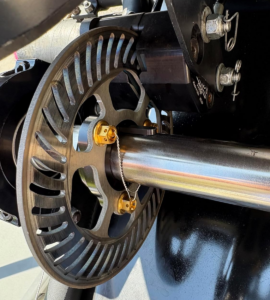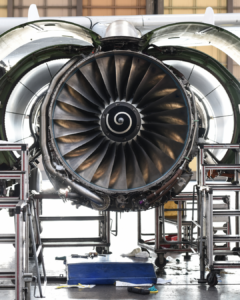In engineering, aviation, and various industrial sectors, ensuring that fasteners and components stay securely in place is essential for maintaining safety and operational integrity. One of the key tools used to prevent fasteners from loosening due to vibration or mechanical stress is the safety wire, also known as lock wire. This simple yet effective mechanism has been in use for decades and remains indispensable in applications where failure is not an option.

Safety wire, also referred to as lock wire, is a type of wire used to secure fasteners, bolts, nuts, and other mechanical components, preventing them from loosening unintentionally. It works by being threaded through holes in the fasteners and then twisted in a way that holds them tight. The safety wire is typically made from stainless steel, though it can also be manufactured from other materials like titanium or copper, depending on the application’s needs. Its key characteristic is its strength and ability to resist corrosion, which makes it highly reliable in challenging environments such as high-stress mechanical systems and aviation.

One of the primary functions of safety wire is to prevent fasteners from loosening due to vibration, mechanical movements, or thermal cycling. Many industries, particularly in aerospace and automotive engineering, rely on components that are subjected to high levels of stress. In such environments, even a small amount of loosening can lead to failure. Safety wire ensures that critical components remain securely fastened, thereby enhancing the safety and reliability of the system.
In aviation, safety wire is vital. Aircraft components are often subjected to significant forces during flight, including extreme vibration and rapid temperature changes. Fasteners like bolts and nuts on aircraft must remain tightly secured at all times. Without safety wire, there is an increased risk of failure, which could have catastrophic consequences. For example, critical areas such as engine assemblies, landing gear, and structural connections are often secured with safety wire to maintain the integrity of the aircraft.

Safety wire is also widely used in motorsports, especially in high-performance vehicles where vibration and heat can cause fasteners to loosen. In racing environments, where even a slight failure could lead to a crash, safety wire helps ensure that every part remains in place. For example, in Formula 1 and other motorsports, engine parts, exhaust systems, and suspension components are all commonly secured with lock wire to prevent catastrophic failures.
Beyond aviation and motorsports, safety wire is also employed in industrial applications such as oil rigs, construction, and heavy machinery. These environments often involve high-torque or high-vibration machinery where loose fasteners could cause dangerous malfunctions. Safety wire helps maintain operational efficiency and safety by ensuring that components are properly secured.
Safety wire comes in different grades, materials, and thicknesses, depending on the specific requirements of the application. The most common types are:
Safety wire is typically installed by threading it through small holes in the fastener or nut and then twisting it in a way that secures the fastener in place. The wire is often twisted using a hand tool or a specialized wire twister. When the wire is properly installed, it holds the fastener tightly against its counterpart, preventing movement that could lead to loosening.
Here is a general guide on how safety wire is applied:
While safety wire is an effective solution to prevent fasteners from loosening, improper installation can lead to failure. For instance, too much tension on the wire can cause it to break, while insufficient tension may not provide the required security. Additionally, using the wrong wire thickness or material for a given application can compromise safety.
It is also crucial that the safety wire is regularly inspected for wear, corrosion, or any signs of damage, particularly in high-stress environments like aerospace or motorsports.
Safety wire, or lock wire, is an essential component in high-stakes industries where precision and security are non-negotiable. From aerospace to motorsports and heavy industrial machinery, it plays a critical role in preventing mechanical failure and ensuring smooth, safe operation.
At Sunset Wire, we understand that the strength of your systems depends on the quality of your materials. That’s why we offer top-tier safety wire made from corrosion-resistant alloys like stainless steel, copper, and titanium—engineered to meet the highest industry standards. Whether you’re working in aviation, racing, or rugged industrial environments, Sunset Wire provides dependable solutions you can trust.
Choose Sunset Wire—because safety starts at the source.
Have a different question for Wire Cloth Man? Click the link below!